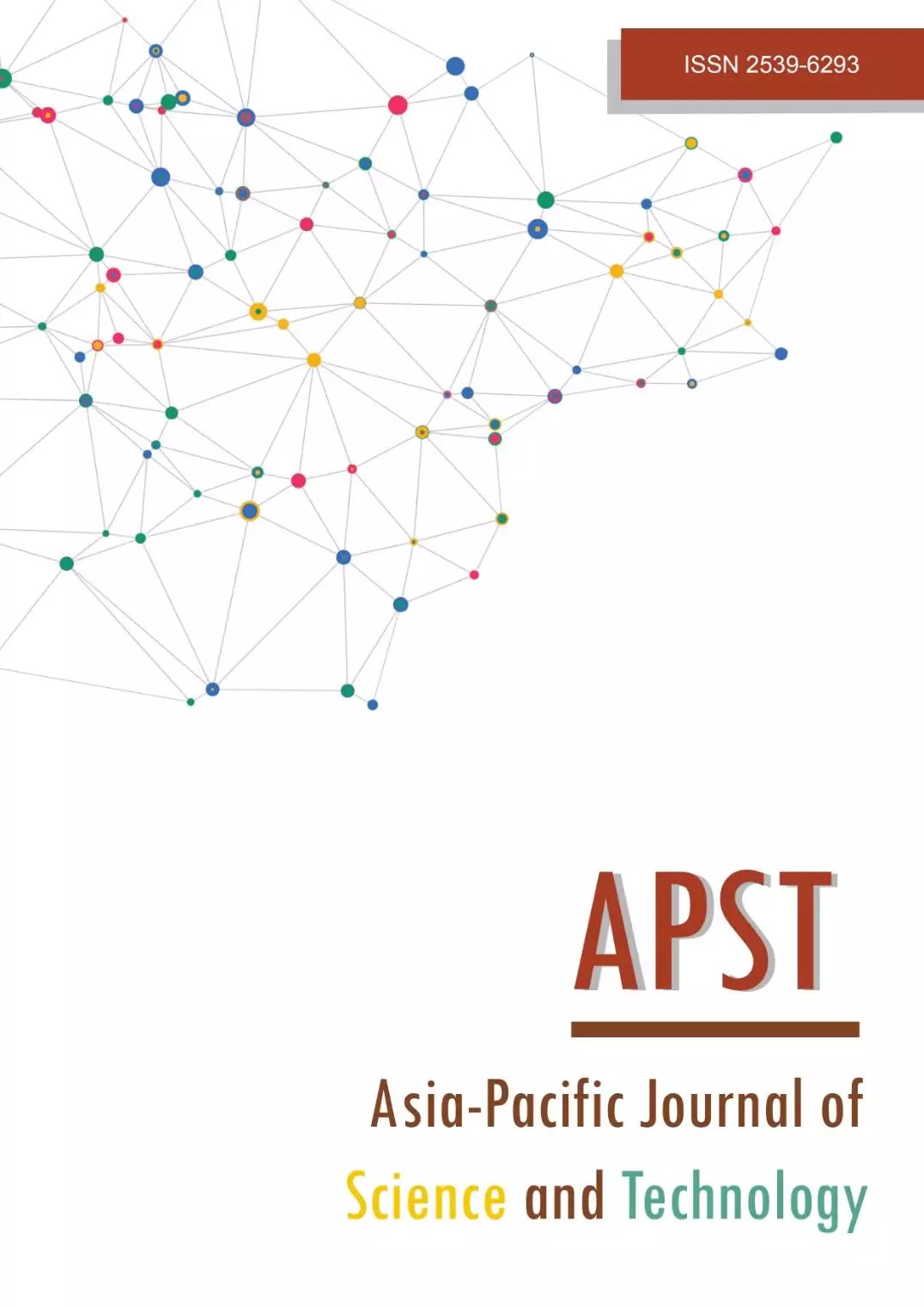Physiotherapist performance during manual chest vibration in simulated adult lung: frequency, force and pattern
Main Article Content
Abstract
Previous studies of manual chest wall vibration (MV) usually reported frequency, compression force, and peak expiratory flow rate, not covering the MV qualityF factors. Therefore, this study explored the physiotherapist's performance during MV, including frequency, compression force, force oscillation amplitude (COA), pattern of compression and oscillation, duration of MV, and upper body fatigue score. We recruit 41 physiotherapists with experience in cardiopulmonary (≥ 1 year). They performed two-hand and one-hand Mvs 5 times each on an artificial lung model. The result showed that MV frequency, compression force, and COA around 10.4 (range 5.4-19.6) Hz, 4.5 (range 0.9-34.4) Kg, 1.5 (0.2-9.7) by two-hand MV, respectively, and, 10.5 (6.4-14.9) Hz, 3.3 (0.5-23.2) kg, and 1.0 (0.2-7.9) kg for one-hand MV, respectively. Most physiotherapists (90.2%) used two-hand MV in routine service, and 58 % performed a simultaneous compression with oscillation. Thirteen % performed MV without compression. The common MV duration is 5-6 sec. Five consecutive MVs slightly increased the fatigue. Within the sensible limit of evidence, we suggest that the physiotherapist can adjust compression force, starting volume related to the initial time of compression and oscillation, frequency, and COA. There may be essential factors that affect the physical property of the MV technique.
Article Details

This work is licensed under a Creative Commons Attribution-NonCommercial-NoDerivatives 4.0 International License.
References
McCarren B, Alison JA, Herbert RD. Manual vibration increases expiratory flow rate via increased intrapleural pressure in healthy adults: an experimental study. Aust J Physiother 2006;52:267–271.
Strickland SL, Rubin BK, Drescher GS, Haas CF, O’Malley CA, Volsko TA, et al. AARC clinical practice guideline: effectiveness of nonpharmacologic airway clearance therapies in hospitalized patients. Respir Care 2013;58:2187–193.
Chaboyer W, Gass E, Foster M. Patterns of chest physiotherapy in australian intensive care units. J Crit Care 2004;19:145–151.
Jingar A, Alaparthi G, Vaishali K, Krishnan S, Zulfeequer, Unnikrishnan B. Clinical management practices adopted by physiotherapists in India for chronic obstructive pulmonary disease: A national survey. Lung India 2013;30:131.
Cakmak A, İnce Dİ, Sağlam M, Savcı S, Yağlı NV, Kütükcü EÇ, et al. Physiotherapy and rehabilitation implementation in intensive care units: a survey study. Turk Thorac J 2019;20:114–119.
Rubin BK. Secretion properties, clearance, and therapy in airway disease. Transl Respir Med 2014;2.
Button B, Goodell HP, Atieh E, Chen Y-C, Williams R, Shenoy S, et al. Roles of mucus adhesion and cohesion in cough clearance. Proc Natl Acad Sci 2018;115:12501–12506.
King M. The role of mucus viscoelasticity in cough clearance. Biorheology 1987;24:589–597.
Bustamante-Marin XM, Ostrowski LE. Cilia and mucociliary clearance. Cold Spring Harb Perspect Biol 2017;9:a028241.
McCarren B, Alison J. Physiological effects of vibration in subjects with cystic fibrosis. Eur Respir J 2006;27:1204–1209.
Shannon H, Stiger R, Gregson RK, Stocks J, Main E. Effect of chest wall vibration timing on peak expiratory flow and inspiratory pressure in a mechanically ventilated lung model. Physiotherapy 2010;96:344–349.
Pryor JA, Webber BA, Hodson ME, Batten JC. Evaluation of the forced expiration technique as an adjunct to postural drainage in treatment of cystic fibrosis. BMJ 1979;2:417–8.
Partridge C, Pryor J, Webber B. Characteristics of the forced expiration technique. Physiotherapy 1989;75:193–194.
King M, Phillips DM, Gross D, Vartian V, Chang HK, Zidulka A. Enhanced tracheal mucus clearance with high frequency chest wall compression. Am Rev Respir Dis 1983;128:511–515.
Poncin W, Reychler G, Liistro M, Liistro G. Comparison of 6 oscillatory positive expiratory pressure devices during active expiratory flow. Respir Care 2020;65:492–499.
Tomkiewicz RP, Biviji A, King M. Effects of oscillating air flow on the rheological properties and clearability of mucous gel simulants. Biorheology 1994;31:511–520.
Wong WP, Paratz JD, Wilson K, Burns YR. Hemodynamic and ventilatory effects of manual respiratory physiotherapy techniques of chest clapping, vibration, and shaking in an animal model. J Appl Physiol 2003;95:991–998.
McCarren B, Alison JA, Herbert RD. Vibration and its effect on the respiratory system. Aust J Physiother 2006;52:39–43.
Li SK, Silva YR. Investigation of the Frequency and Force of Chest Vibration Performed by Physiotherapists. Physiother Can 2008;60:341–348.
Imle P. Percussion and vibration. Chest Physiother. Intensive Care Unit. 2nd ed., Baltimore: Williams and wilkins; 1989, p. 134–152.
Jones C. Manual techniques for airway clearance. Phys. Ther. Respir. Syst. Tech. Assess., Khon Kaen, Thailand: Klungnana Vitthaya press; 2014, p. 101–125.
Leelarungrayub J. Physical therapy treatment for patient with respiratory problem. Clin. Chest Physiother., Bangkok, Thailand: Thammasat Book; 2014, p. 133–195.
Chidnok W. Physical therapy teatment for critical patients. Phys. Ther. Crit. Patients, Phitsanulok, Thailand: Naresuan University Publishing House; 2018, p. 119–150.
Gregson RK, Stocks J, Petley GW, Shannon H, Warner JO, Jagannathan R, et al. Simultaneous measurement of force and respiratory profiles during chest physiotherapy in ventilated children. Physiol Meas 2007;28:1017–1028.
Audsavachulamanee B, Aueyingsak S, Ubolsaka-Jones C, Kosura N, Chanapon J, Yubonpan N, et al. Thai physiotherapists’ performance of manual chest wall percussion on an artificial lung: frequency, force, and fatigue perception. Arch Allied Health Sci 2023;35:23–34.
Pieterse A, Hanekom SD. Criteria for enhancing mucus transport: a systematic scoping review. Multidiscip Respir Med 2018;13:22.
Raphael JH, Strupish J, Selwyn DA, Hann HC, Langton JA. Recovery of respiratory ciliary function after depression by inhalation anaesthetic agents: an in vitro study using nasal turbinate explants. Br J Anaesth 1996;76:854–859.
Yaghi A, Zaman A, Cox G, Dolovich MB. Ciliary beating is depressed in nasal cilia from chronic obstructive pulmonary disease subjects. Respir Med 2012;106:1139–1147.
Zahm JM, King M, Duvivier C, Pierrot D, Girod S, Puchelle E. Role of simulated repetitive coughing In mucus clearance 1991:5.
Hoffstein V. Relationship between lung volume, maximal expiratory flow, forced expiratory volume in one second, and tracheal area in normal men and women. Am Rev Respir Dis 1986;134:956–961.
Hasani A, Pavia D, Agnew JE, Clarke SW. Regional lung clearance during cough and forced expiration technique (FET): effects of flow and viscoelasticity. Thorax 1994;49:557–561.


